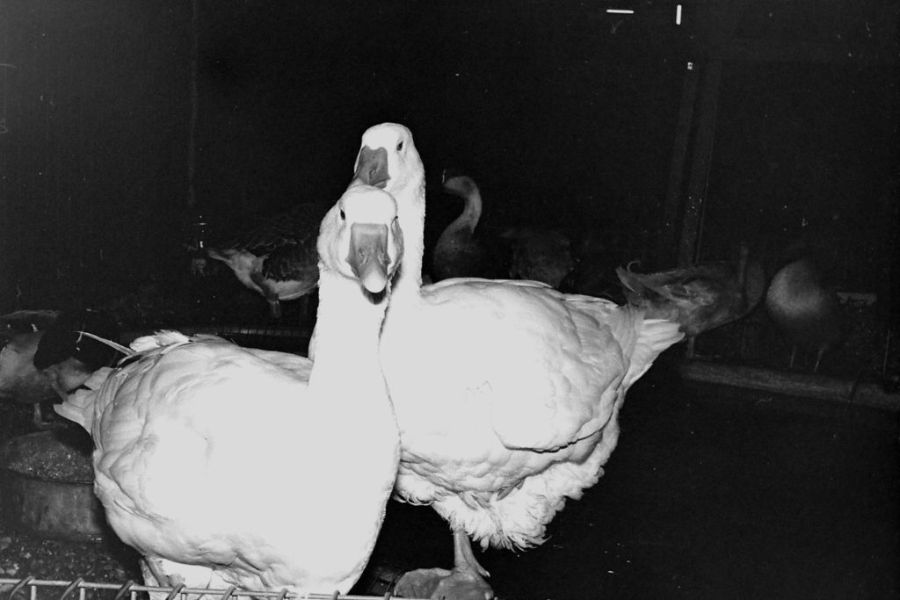Geese
Creating the White Toulouse
Developing the Camden White Toulouse
Australian account on Camden White Toulouse – Michael Peel’s breeding strategy insights. Michael Peel often quotes “we nurture the birds we cherish AND hold a deep affection for the birds we breed.” Michael adores waterfowl, particularly geese, and has been caring for them since his early years in Kellyville, situated in the Sydney hills region. Proximity to Hawkesbury Agricultural College, less than 20km away, enabled Michael to obtain top-notch geese that formed the foundation of his flocks.
Upon arrival at Peel Ridge, you cannot miss the naturally favorable position of the farm and its design. Waterfowl holds a special place in Michael’s heart, evident in his arrangement of pens to ensure a continuous supply of fresh water. The water ponds and troughs are gravity-fed from a sizable tank automatically filled with water from the Nepean River. Even the used water is managed, with a large concrete tank used to collect and irrigate it back into the pasture.
The farm bears a simple layout. Instead of grand driveways, white picket fences, or ornate houses, investments have been made in Michael’s true passion – his waterfowl. The fencing is fox-proof, the water sources and housing are strategically placed to serve and safeguard the waterfowl.
A look around the farm reveals a variety of waterfowl. Ducks and geese of different breeds populate the area, with prominent and colorful Rouen ducks stealing the show. Michael has made it a priority to uphold the finest quality of stock, sparing no expense or effort in their breeding.
At the heart of what Michael fondly calls the Bar’n’Grill is a water feature specifically constructed for the waterfowl. As we sat under the verandah, a majestic flock of Camden White Toulouse geese glided in. Their sheer size and excellence are a sight to behold, serving as tangible evidence of the success achievable through deliberate breeding using top-quality stock.
What’s the reason behind this narrative?
Some confusion has surfaced regarding the origin and timeline of the White Toulouse geese. To shed light on this, I conversed with Michael Peel to gather his perspective on the inception of the White Toulouse breed.
When was the Australian White Toulouse first established?
Numerous discussions have unfolded across various Australian Facebook poultry groups. Two primary theories surrounding the maiden display of Australian White Toulouse emerged:
Theory 1
The initial hypothesis suggests that the Australian White Toulouse might have made its debut in 2008 at the National Poultry Show by Grahame Webb. This claim surfaced in the Exhibition Poultry Facebook group in 2016, leading to an interview conducted by Cathy Newton with one of the individuals mentioned in the discussion. Following a conversation with Graham Webb, here’s his response:
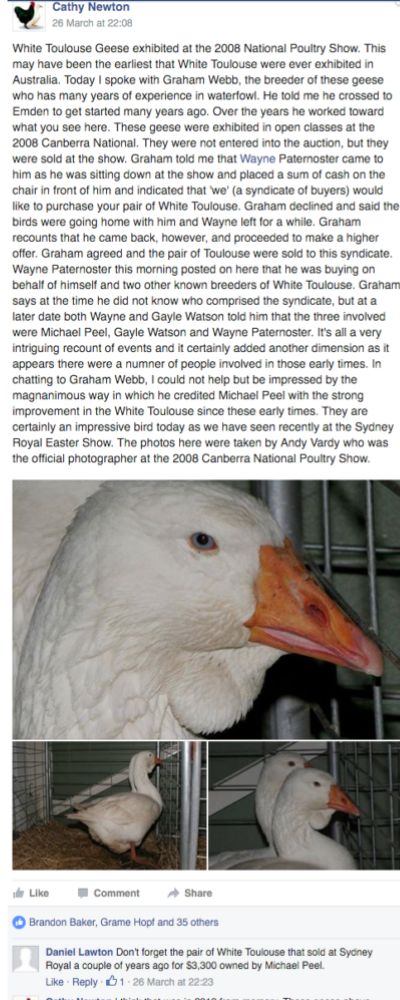
Theory 2
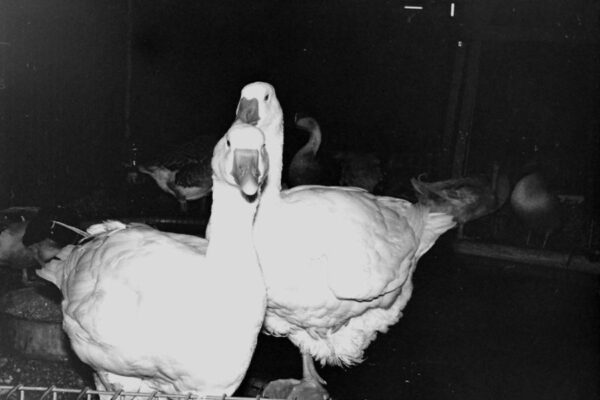
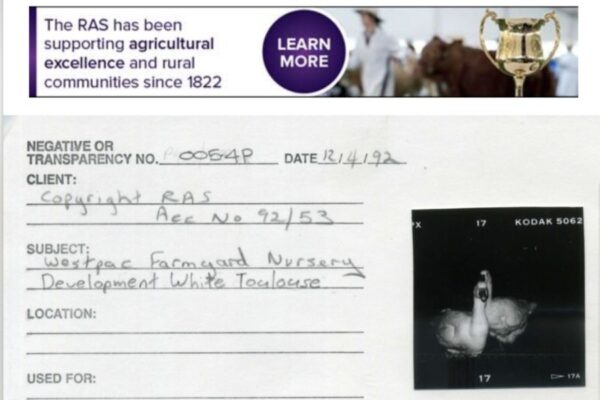
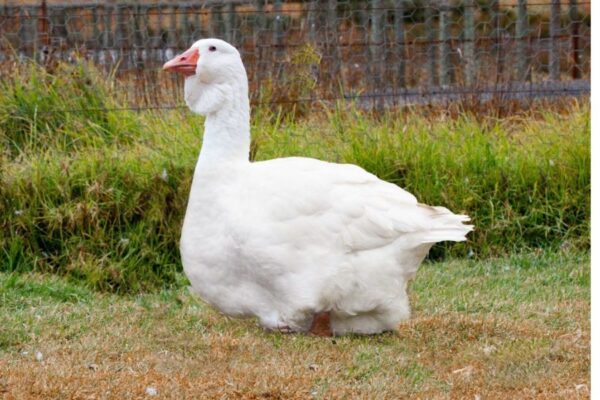
The Evolution Process
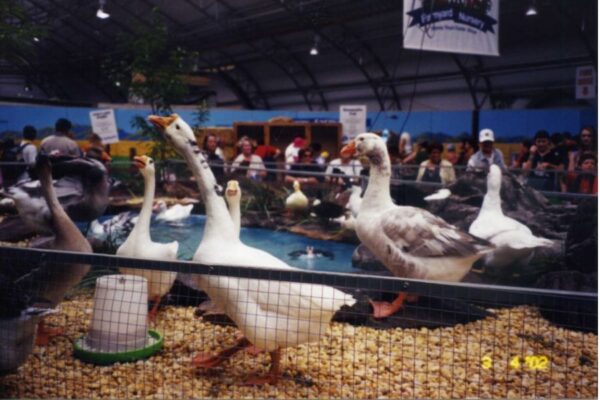
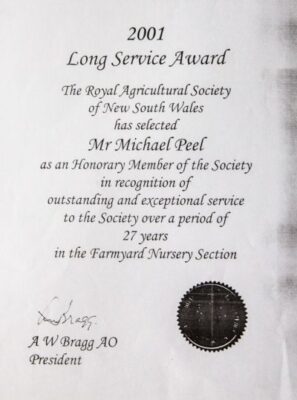
Patience in Breeding
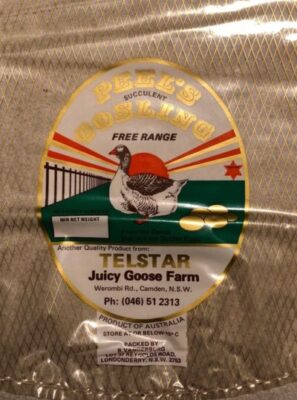
End Product
Wrap-up
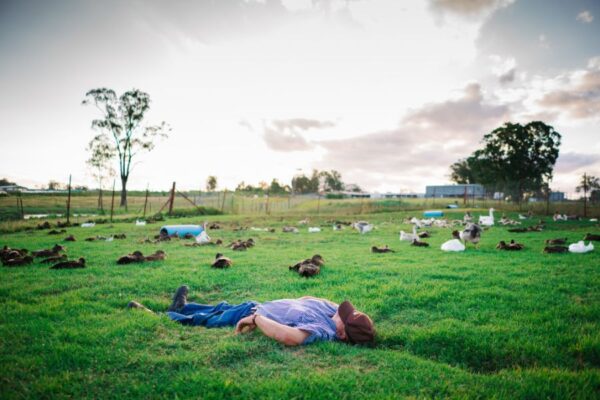
- Sharpen your livestock observation skills.
- Quantity matters – higher production accelerates breed development.
- Quality foundation stock is paramount.
- Consult reputable and expert breeders. A professional livestock breeder selectively mates carefully chosen pairs to ensure offspring exhibit specific, consistently replicable traits over an extended period.
- Passion for the craft – Well-nurtured livestock yield better results.
Australasian Poultry Story: Crafting the Camden White Toulouse
While I cannot match the eloquence of the original article, this adaptation endeavors to capture the essence of the narrative.This composition was penned by the delightful Meg Miller, Editor of the Australasian Poultry Magazine. Originating in 2013, it elaborates on the inception of the Camden White Toulouse breed in Australia. Instead of endeavoring to rephrase this excellently written piece, I sought Meg’s permission to feature it on this site. Gratitude to Meg!
Michael Peel has long been captivated by the regal posture and serene demeanor of Toulouse geese. Unsatisfied with solely the conventional grey variant, he embarked on a mission to propagate a blue-plumaged Toulouse. This endeavor commenced almost a decade ago.
Following the Canberra National in 2008, English waterfowl adjudicators Mike and Chris Ashton journeyed to Peel Ridge Stud at Teresa Park, NSW. Upon reviewing the several years’ effort Michael had dedicated to the blue project, they forewarned him that it might not yield the desired outcome, potentially resulting in buff or white-plumaged birds. “It was the setback in breeding blue-plumaged birds that spurred me towards a white Toulouse,” Michael expressed. “Surveying the aftermath of numerous years spent in futile breeding, I discerned that I could salvage something substantial from the jumble on hand. Essentially, there were some commendable white-plumaged birds from the blue undertakings, and what remained was to boost the population significantly to access quality specimens for selection.”
Precedence of White Chinese Breed
Fortunately, I could draw upon my expertise acquired whilst developing White Chinese geese in the 1970s. The objective was to enhance egg production for the meat sector. Initially crossing the Embden with the Brown Chinese led to a higher number of goslings. The resultant hybrids proved ideal for commercial purposes.
Subsequently, a lineage was established from pied birds sourced from the Brown Chinese. Upon encountering the pied specimens and promptly procuring the flock, a few white birds were bred from this stock. This facilitated my work with two distinct lines. In commercial ventures, any substandard birds from the White Chinese initiative could be utilized for meat processing. As a breeder, particularly when pioneering a novel color variant, one anticipates a surplus of culls. Having the capability to process and vend them is advantageous.
It consumed approximately 14-15 years for the White variety to reach stability. A decade was devoted to experimenting with the pied white lineage before progress accelerated.
Recalling the visuals of White Chinese geese from international sources instigated my desire to cultivate them. I cannot disavow that transitioning into a meat producer propelled the process. Initially, I assisted with the family dairy, participating in the twice-daily milking routine. The geese were merely a side project at that juncture. It wasn’t until their numbers burgeoned swiftly that goose breeding evolved into a substantial enterprise capable of self-sustainability. The economic returns from geese during my commercial breeding years outshone those of other livestock like sheep and cattle due to arid conditions and drought. I marketed them under the Telstar Juicy Goose Farm brand.”
“A valuable lesson gleaned from those times is that if you amplify the numbers, your prospects of swift enhancement and acquisition of desired traits amplify in comparison to working with a meager count of 20 goslings. Furthermore, a greater occurrence of diverse traits emerges, often conserving years of labor. Naturally, if the breeding flock lacks sufficient numbers, the process extends since Toulouse geese are not renowned for high fertility. Their breeding cycle is primarily confined to once a year, and missing it equates to a prolonged wait until the subsequent season.”

